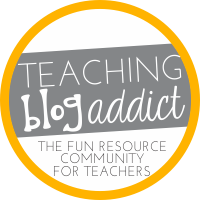Narrative Writing for Middle School ELA – Development of a Theme
During the first nine weeks, we cover narrative writing. This is a way to teach standards like how to develop a theme. We use quick narrative writing assignments simply because we have SO much to teach. Teaching narrative writing makes sense for us to do in the first nine weeks because we read a lot of short stories and can peek at how authors of these stories develop their theme. during this time. If you’re interested in seeing what we do for the first nine weeks of school and how we fit everything in, we have a free resource in our TpT store called 7th Grade ELA, a Glimpse into our Yearly Plans, that maps it all out and even gives helpful links that you can use.
Now, let’s get started on this quick narrative writing lesson!
What standards will you cover?
One of the standards for sixth, seventh, and eighth grades is for students to analyze the development of theme. The narrative writing exercise we are going to tell you about today will cover that standard while at the same time provide a creative and fun narrative writing opportunity.
Here’s what you do! Put your students in small groups – three works best. Give each group a theme statement. Tell them that their job is to write a quick story that teaches that theme. Before writing, they need to do some planning. They will ask themselves questions about the characters, setting, and plot.
In order to create this theme, who should my characters be? What type of personalities should they have? What should their flaws be? Their strengths?
Where should this story take place in order for readers to conclude the theme?
What should be the main conflict? How should the story begin? What will be the turning point of the story? How will we end it?
Once students have done their planning, they should write their quick story. Make sure students understand that this story is just a writing exercise, so it doesn’t have to be perfect. Their job is to quickly write a story, developing the theme they were given.
After writing the story, give students some questions to think through HOW they developed their theme. Why did you choose the characters you did? What did you use the most to develop the theme? Did the setting contribute to the theme or could the story take place somewhere else?
After the stories are written…more look more at how the theme was developed
When time is up, take up each groups’ story. Give each group a copy of all of the theme statements, each one labeled with a number Read each story out loud, one by one, and have the class guess which theme belongs to that story by matching the number corresponding to the theme statement to the story.
Once the students have had time to choose the theme, reveal the true theme statement that the group was assigned. Then, engage the group who wrote the story in explaining how they developed the theme.
Some things to help you use this activity today…
This is a list of theme statements that you can use.
We also have a product in our TpT store that includes a PowerPoint to teach theme and development, handouts for the students, and even a poem with a prompt for analyzing the development of theme in it. There is even a sample essay included. And, it of course all of the things we talked about! A meaningful and engaging way to allow your students to understand the ways authors develop theme is now at your fingertips!
Happy teaching!






